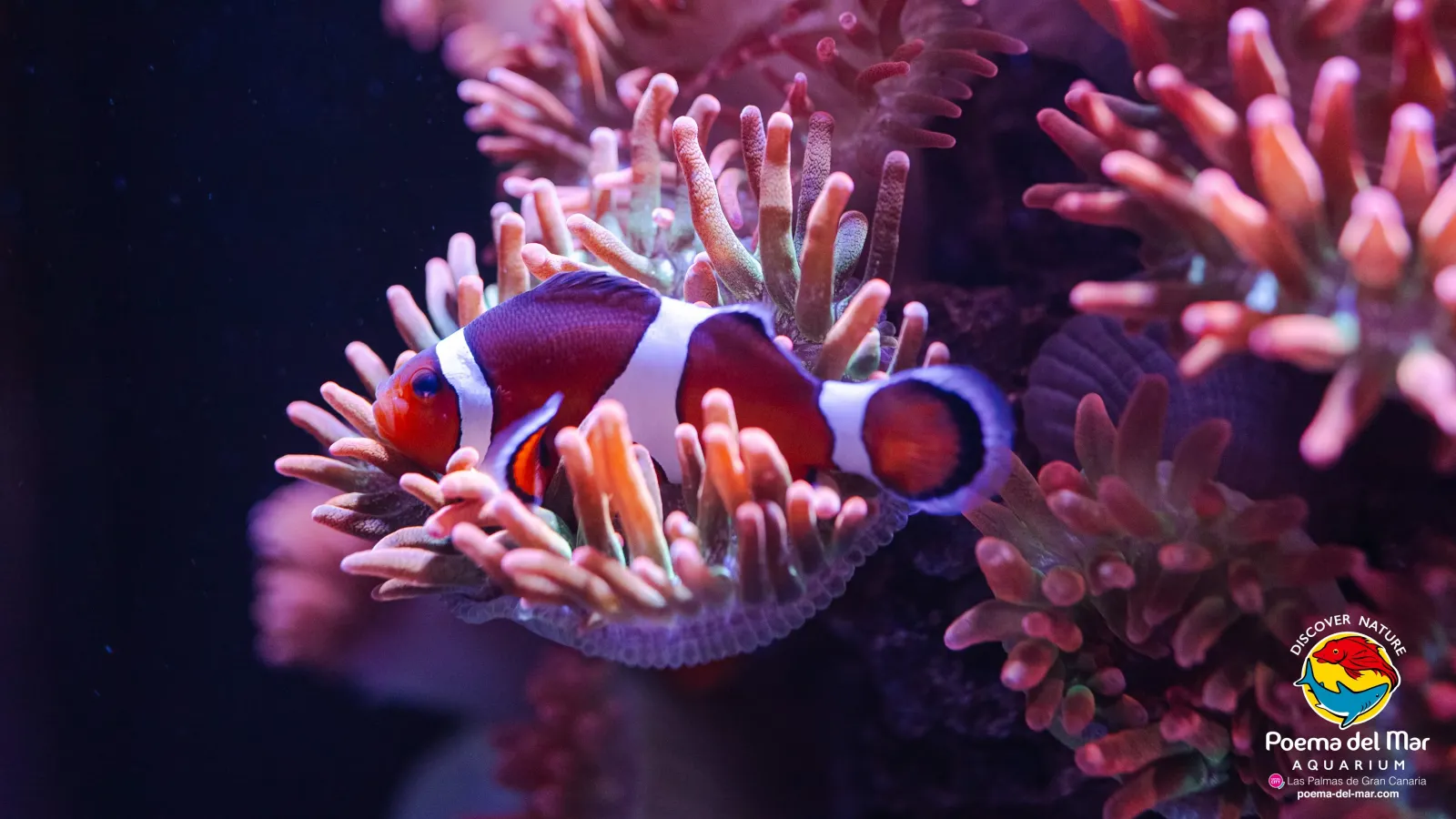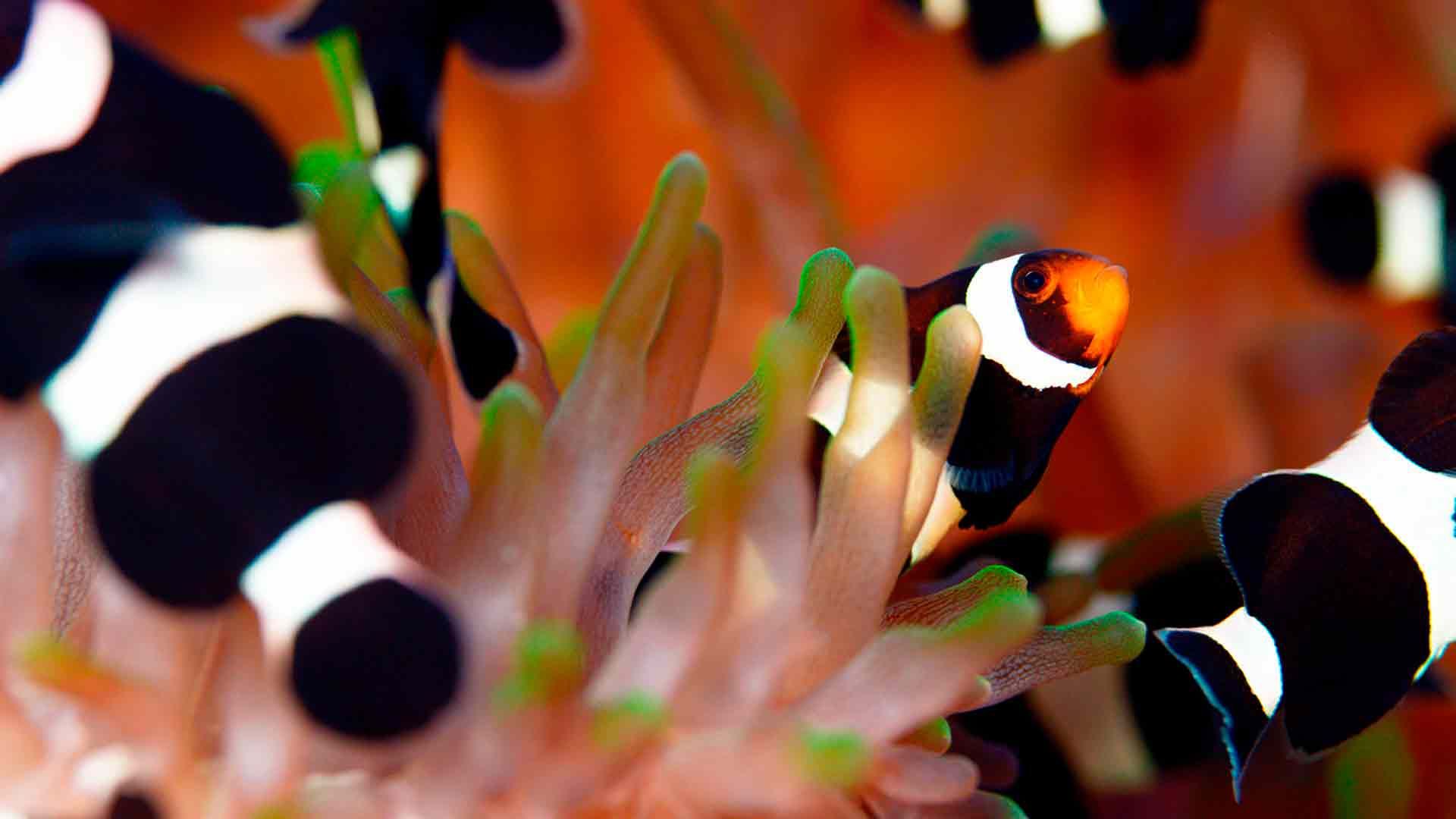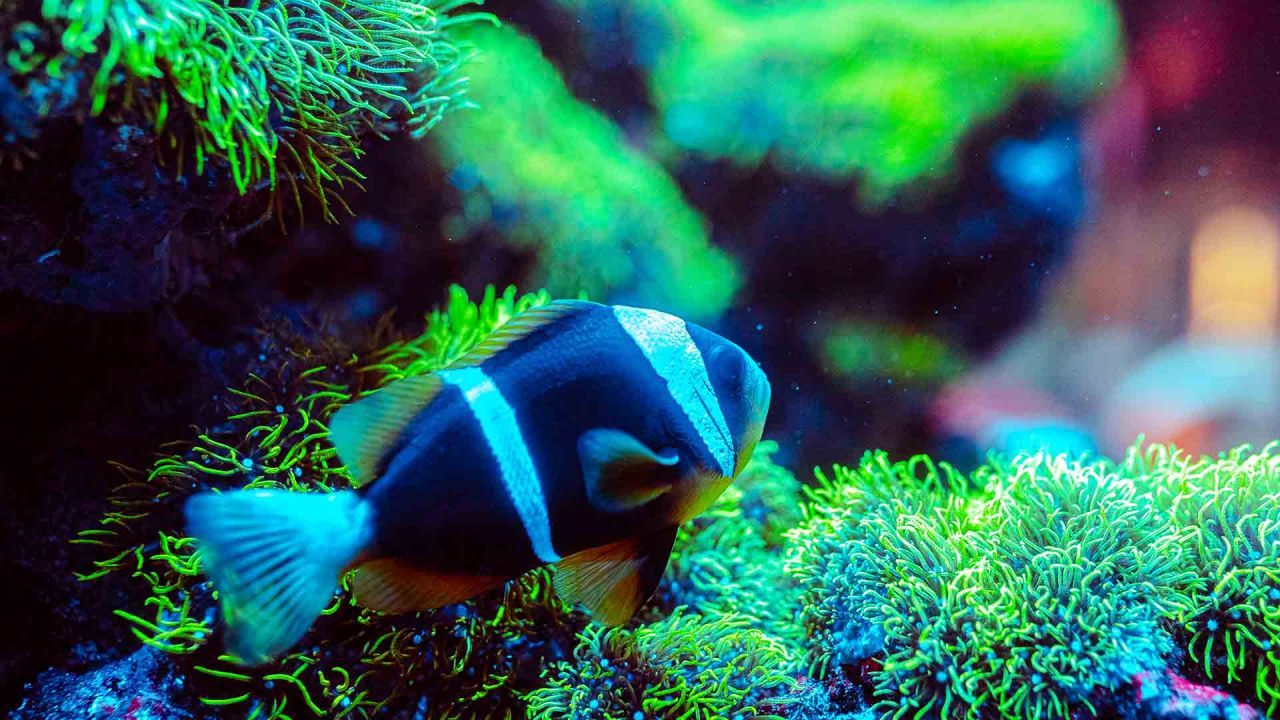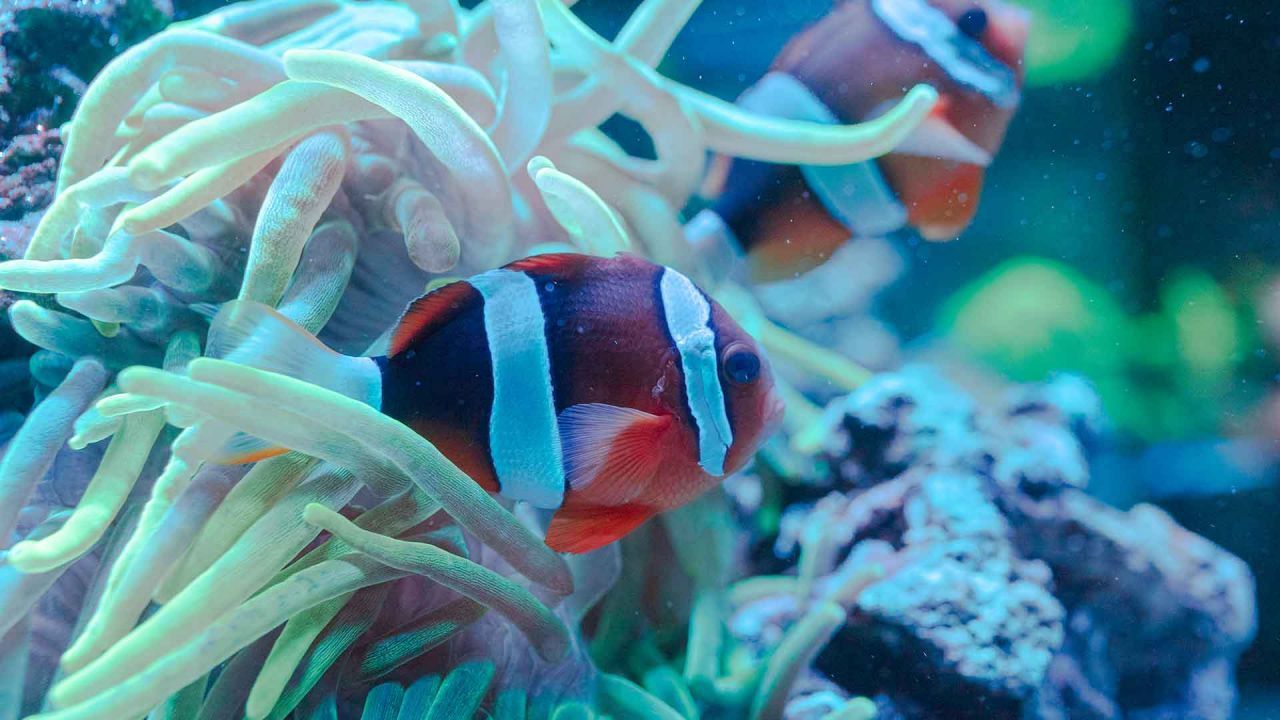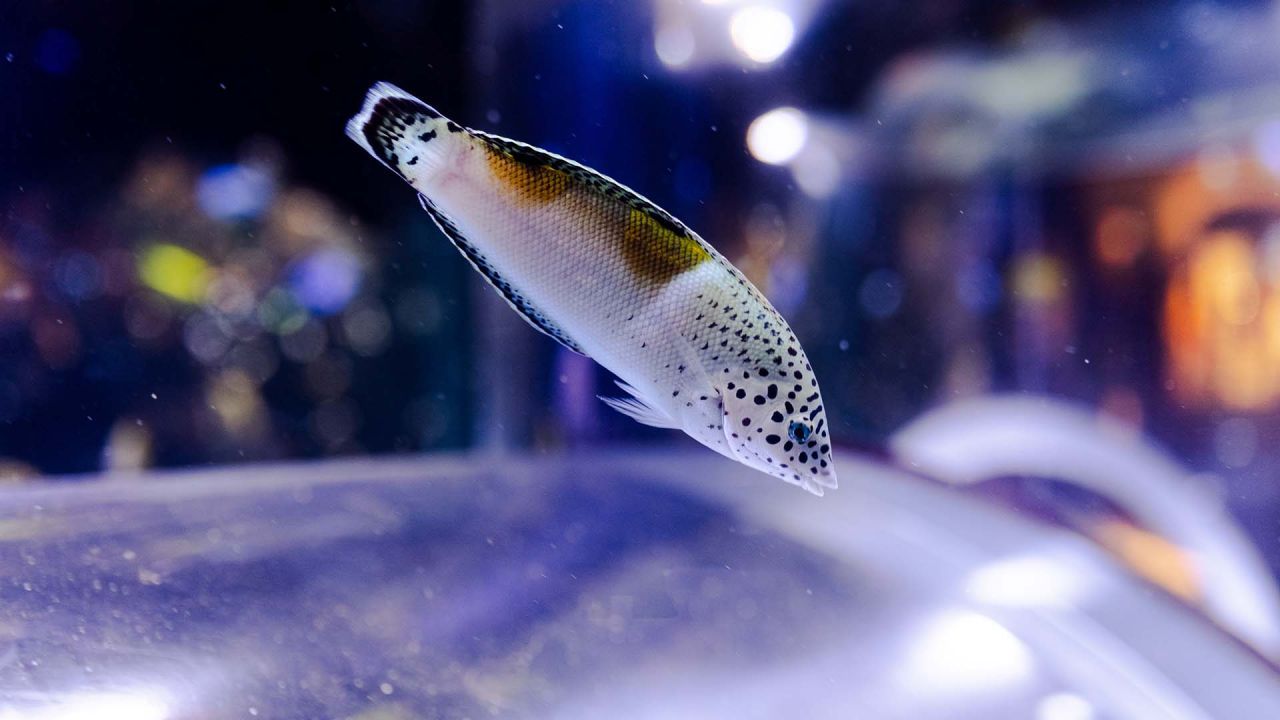Saltwater | Omnivorous |Diurnal | Indo-West Pacific | Up to 11 cm | 10 years
The clownfish (Amphiprion ocellaris), a small fish native to the coral reefs of the Indo-Pacific, stands out for its vibrant colouring and its close relationship with sea anemones. Reaching up to 11 cm in length, this fish is renowned for its unique social behaviour and its symbiotic partnership with anemones, which offer it shelter and protection.
This species’ remarkable ecological adaptation is evident in its breeding habits, characterised by hierarchical groups in which the largest male changes sex to become the dominant female. If you wish to see clownfish in Gran Canaria, Poema del Mar is the ideal place, as it recreates their natural habitat and allows visitors to observe this fascinating species up close.
Geographical distribution
Clownfish are mainly found in the Indo-West Pacific, particularly in the warm waters off Australia, Indonesia, the Philippines, and the Mariana Islands. This small fish primarily inhabits nearshore coral reefs at depths of 3 to 15 metres. Although its distribution is widespread in this region, it depends closely on the presence of anemones for survival, limiting it to areas where these creatures are abundant.
 Habitat
Habitat
This species mainly inhabits Indo-Pacific coral reefs, a marine ecosystem with high biodiversity. It prefers reef areas characterised by:
- Warm, nutrient-rich waters: Thrives in clear tropical waters where reef productivity supports its feeding and breeding.
- Association with sea anemones: Commonly found in close relationship with anemones, which provide refuge and protection among their tentacles.
- Complex coral structures: Uses coral formations for shelter and to establish territories, vital for its life cycle.
- Shallow depths: Prefers relatively shallow reef areas where sunlight encourages the growth of algae and anemones.
- High biodiversity: The presence of a varied community of reef organisms creates a balanced ecosystem, benefiting the clownfish.
The clownfish is closely tied to the health of coral reefs, and its presence is an indicator of the quality and biodiversity of these marine ecosystems.
 Lifestyle and behaviour
Lifestyle and behaviour
The Clownfish is a territorial and social species, displaying unique behaviours adapted to its relationship with anemones. Its lifestyle and behaviour include:
Social behaviour:
- Lives in hierarchical groups with a dominant female, a breeding male, and several juvenile males.
- Forms a symbiotic relationship with anemones, where it finds shelter and protection.
- Highly territorial, rarely straying far from its host anemone.
Daily activity:
- Diurnal, active during the day.
- Feeds and helps keep its anemone clean during daylight hours.
Reproduction:
- Oviparous (egg-laying) species.
- The male tends and aerates the eggs, which are attached to the substrate near the anemone.
- Protandrous hermaphroditism: all are born male, and the largest male changes sex to become female.
Relationship with the environment:
- Dependent on the health of coral reefs and anemones for survival.
- Develops a mucous layer that allows it to live among the stinging tentacles of anemones. This immunity is not innate but acquired gradually as it chemically adapts to its host anemone, avoiding stings and paralysis.
 Diet
Diet
In the wild
- Plankton.
- Small invertebrates.
- Parasites and leftover food from the anemone.
Under human care
- Commercial foods for omnivorous fish.
- Small live foods (such as daphnia and brine shrimp).
 Conservation status
Conservation status

The clownfish (Amphiprion ocellaris) is listed as Least Concern (LC) by the IUCN Red List, indicating that while its population is stable, ongoing monitoring is needed due to threats such as coral reef degradation and overexploitation for the aquarium trade.
Main threats:
- Habitat loss: Coral reef degradation and destruction due to climate change (coral bleaching), pollution, sedimentation, overfishing, and destructive fishing practices severely impact its environment.
- Ocean acidification: Increased ocean acidity from carbon dioxide absorption threatens coral health and, consequently, the clownfish’s habitat.
